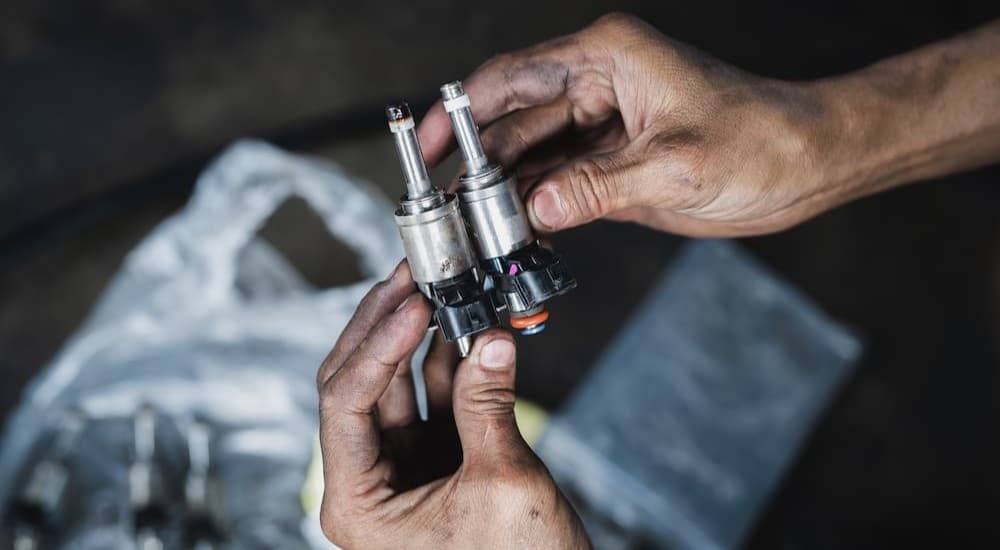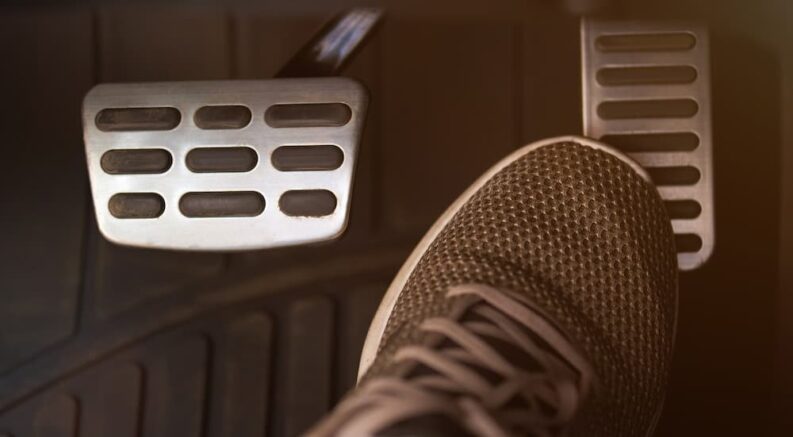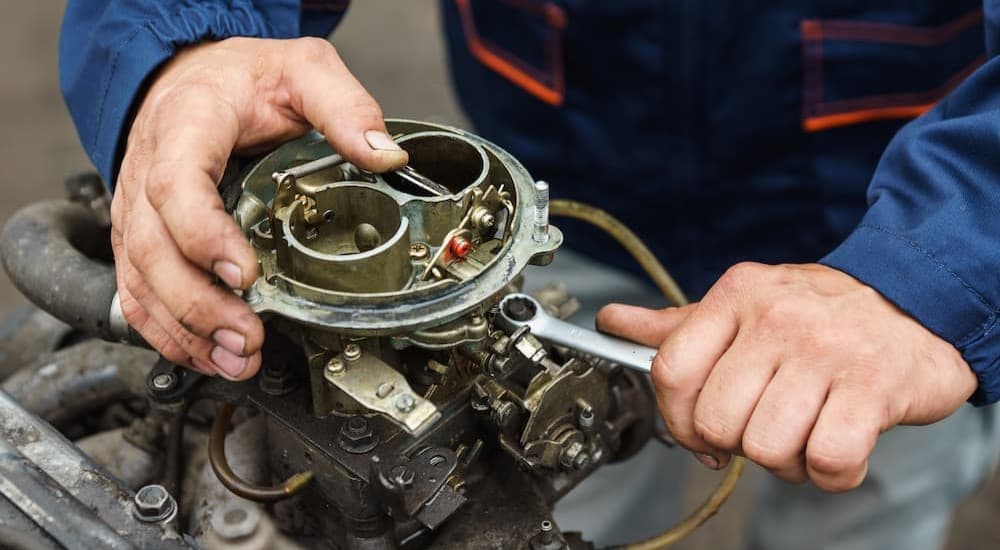Taken as a whole, every car is an insanely complicated piece of machinery with so many moving parts that trying to understand them all can feel quite overwhelming. There’s a reason mechanics go to school for this. I find that it helps to focus on one component or system at a time to really understand how it works and what variations of it you’ll find on different vehicles out there. Today, we will look at fuel injection, what it is, how it works, and what types of fuel injection systems you’ll see on various cars. This is an essential part of engine design and has been a major focus among automotive engineers over the last few decades, so it’s worth knowing what this is all about when looking at different vehicles and understanding the car in your driveway.
What Is Fuel Injection?
Before discussing the different types of fuel injection systems, we should briefly discuss why fuel injection is even needed. Internal combustion engines function through fiery explosions in the combustion chambers and cylinders of your engine. These explosions move pistons, which turn the crankshaft, sending power to your vehicle’s transmission, wheels, and other systems. (The process is more complicated than I’m making it sound, but we’re keeping things simple.)
When you see an I-4 or V6 engine, that number tells you how many pistons the engine has. Each piston has its own ignition chamber as part of its cylinder construction. For ignition and explosions to happen, you need fuel. In a car, that fuel is a combination of gasoline and oxygen. The right combination of these two things, at high pressure, with a spark (or high pressure alone in a diesel engine), creates the explosion that keeps the system working. Fuel injection combines fuel and air in the correct proportions and sends this mixture into the engine’s combustion chambers.
Fuel Injection in the Past: The Carburetor
Fuel injection systems have been around for well over a century, but they weren’t practical or common for automobiles. They were primarily developed for aviation and similar engines before making their way into the vehicles in our driveways. Before that, carburetors were developed to mix fuel and then send it to the engine’s chambers. Cars used carburetors until the 1980s, with some trucks holding out until the 1990s when fuel injection replaced them.
Carburetors are relatively simple devices that take in gasoline and oxygen, swirl them together to get the right fuel mixture, and then let that fuel into an engine’s combustion chambers. They’re purely mechanical, using suction from the engine to pull the fuel inside. They worked well, were generally reliable and inexpensive, but were not incredibly efficient. Following the Oil Crises and rising costs of gas in the 1970s, new requirements for efficiency caused car companies to look at better options for fuel injection systems.
Modern Fuel Injection Systems: Single-Point Injection
The simplest fuel injection system you’ll see in some vehicles, mostly older ones, is a single-point injection system. These are the systems that initially replaced carburetors for a lot of vehicles in the 1980s. Essentially, a single nozzle sprays gas into an air intake manifold for the entire engine, where the gas and air mix. From there, it’s pulled into the chambers of the engine. The result is a system that’s quite similar to how carburetors work, but it’s also notably more efficient. Swapping out a carburetor for single-point injection on engines was pretty easy, so manufacturers could implement this change to improve efficiency for their vehicles without too much extra work.
Modern Fuel Injection Systems: Multi-Point Injection
While single-point injection systems are better than carburetors, they’re still not incredibly efficient and are far below the standards of what we expect today. Their use bought car companies time to improve on what had come before, however, and the result is the multi-point injection (MPI) system. Rather than using a single nozzle and one large air intake manifold, each cylinder has its own injector. That’s why this is called a multi-point injection system. The injector nozzles are typically located near the air intake ports of each cylinder, which is why it’s also called a “port” system.
These MPI systems are only possible in cars because of how far electronics have come. They’re controlled by electronic control units, which are technologically beyond what was possible by mechanical means, like a carburetor. These systems can control the amount of fuel provided by each nozzle with remarkable precision, resulting in excellent fuel efficiency and great performance for your vehicle. There are three basic types of MPI systems to note:
- Simultaneous MPI Systems: The simplest version activates all of the injection nozzles at the same time. This is better than a single-point system but doesn’t allow for much precision.
- Batched MPI Systems: Going a step further, groups of nozzles are activated together in batches, typically working in pairs and synchronized with the cylinders they’re connected to. This is even better than simultaneous MPI systems, but still not peak efficiency.
- Sequential MPI Systems: Each nozzle is controlled separately and perfectly synchronized with the phases of the valve and combustion chamber. These are complicated systems and require precision engineering and electronics, but they are the most efficient option generally available.
You’ll typically find sequential MPI systems in modern vehicles, especially cars built with fuel efficiency in mind. Some of these systems can even switch to batched functionality as a backup mode if there’s a problem with fuel monitors, sensors, or the control system. You may be able to determine what type of fuel injection your vehicle has by looking at your owner’s manual. Otherwise, an online search can typically provide this information.

Modern Fuel Injection Systems: Direct Injection
There’s one final type of fuel injection system you can find these days, which takes things to the next level: direct injection. You’ll find this with some MPI systems, although it’s most common for diesel engines, where it’s generally the standard. In other MPI systems, the injector nozzle sprays fuel just outside the actual combustion chamber, which is then pulled into the chamber by the engine’s vacuum. Direct injection sprays the fuel directly into the combustion chamber instead, allowing for precise control over how and when the fuel enters the engine’s cylinders. This requires very precise engineering and timing for the injection system and pistons, but also creates excellent power that’s remarkably efficient.
Can Fuel Injection Systems Be Replaced?
In general, they can be replaced just like any other vehicle component, but they’re a complicated part to swap out. Since fuel injectors are located directly on your vehicle’s engine along a fuel rail, you need to know what you’re doing when it comes to accessing, removing, and replacing them. Problems like engine misfires, rough idling, poor efficiency, and other performance issues can all result from a faulty fuel injector. It’s vital that you replace them with the correct fuel injectors for your engine, which can sometimes cost more than $100 each. Unless you have a lot of experience working on your engine, you’ll want to leave this to a professional. If you have the know-how, however, this kind of work can be incredibly rewarding.


